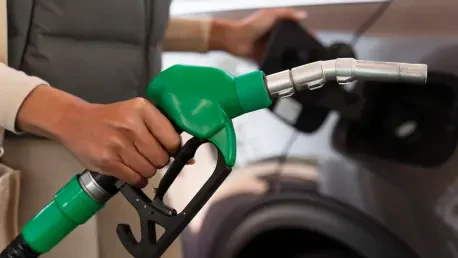In a landscape where energy security and environmental sustainability are more important than ever, Christopher Hailstone brings a wealth of experience in energy management, renewable energy, and electricity delivery to the conversation. With his deep understanding of grid reliability and security, he is well-placed to shed light on the recent U.S. Environmental Protection Agency (EPA) decision to permit the nationwide sale of gasoline with a higher ethanol content during the summer. Let’s dive into the motives, implications, and future of this significant policy change.
What was the motivation behind the EPA’s decision to allow the sale of gasoline with more ethanol nationwide during the summer?
The EPA’s decision was primarily driven by the desire to offer consumers more affordable fuel options while supporting domestic agriculture. By increasing ethanol content, the U.S. aims to leverage its abundant agricultural resources to reduce gasoline’s cost. This strategy aligns with broader goals of enhancing energy security and fostering energy independence. The decision also followed a national energy emergency declaration from January, underscoring the urgency of addressing these priorities.
How does this decision impact Midwestern states differently compared to other states?
Midwestern states, home to many corn farmers, have historically benefited from ethanol production. They already had permissions for summer E15 sales, so the primary difference now is the extended market reach. This nationwide adoption could substantially boost the demand for ethanol, benefiting states like Iowa and South Dakota by solidifying their economic role within the biofuels market and potentially increasing local corn demand.
Could you explain the significance of the national energy emergency declared in the presidential order from January in relation to this decision?
The national energy emergency framed the context for the EPA’s decision, highlighting the need for urgent responses to both energy security and economic sustainability issues. It allowed for regulatory flexibility to pursue measures that could stabilize energy prices, support domestic production, and reduce dependency on international fossil fuel markets. The decision to increase ethanol content in gasoline exemplifies such measures by encouraging the use of renewable energy sources.
How does the increase in ethanol content in gasoline potentially lower the price per gallon?
Ethanol generally costs less to produce than petroleum-based fuels, partially due to subsidies and the availability of feedstocks like corn. By increasing the percentage of ethanol in gasoline, production costs can be reduced, which can translate into lower prices at the pump. Moreover, ethanol improves fuel octane rating, helping engines run more efficiently, further providing cost benefits.
What are the immediate benefits this decision offers to farmers and fuel makers specifically?
For farmers, particularly those growing corn, the decision promises a larger domestic market as ethanol production is closely linked to corn demand. This could mean higher prices and more stable markets. For fuel makers, the expansion of ethanol-blended fuel provides an opportunity to diversify product offerings and potentially capture a larger share of the market, leveraging ethanol’s lower cost structure and cleaner-burning characteristics.
How does this decision support energy security, as mentioned by U.S. Representative Dusty Johnson?
Energy security is bolstered by reducing reliance on foreign oil, which can fluctuate in availability and price due to geopolitical tensions. By promoting the use of domestic biofuels like ethanol, the U.S. minimizes its exposure to these external risks and moves towards a more self-sufficient energy model. This decision thereby supports a stable energy supply and economic resilience.
Can you elaborate on how Iowa drivers saved over $38 million in 2024 by choosing E15 over E10?
The savings come from the cost difference between the two gasoline blends. E15, having a higher ethanol content, is typically cheaper than E10 due to the lower cost of ethanol compared to gasoline. Over time, these savings accumulate, providing substantial economic benefits to consumers who opt for E15. Additionally, the lower emissions of E15 can lead to environmental health benefits, adding further value.
How does this change influence corn farmers, in terms of demand and economic impact?
Corn farmers stand to reap significant benefits as the decision can lead to increased demand for corn, used as the primary feedstock for ethanol production. This uptick in demand could raise corn prices and improve farm incomes, offering a more profitable and stable market outlook. Economic impacts extend beyond farmers to rural communities that rely heavily on the agricultural industry.
Why is there a push for permanent legislation regarding year-round E15 sales, and what are the barriers to achieving it?
Permanent legislation would provide certainty to both consumers and producers, eliminating the need for recurring temporary waivers and facilitating long-term planning and investments. However, barriers include regulatory hurdles, opposition from oil companies fearing market share loss, and environmental concerns related to higher ethanol blend usage. Achieving consensus among these groups is a challenging but necessary step.
What has been the historical response to temporary waivers for E15 sales, and how might that inform future policies?
Temporary waivers have historically been met with mixed reactions. While they offer short-term relief, they create uncertainty and prevent full market integration. This inconsistent approach complicates infrastructure investments. The lessons from these waivers should encourage policymakers to pursue a more stable, long-term legislative framework that supports year-round E15 sales.
How do industry leaders plan to advocate for a permanent rule change in Congress?
Industry leaders are focusing on lobbying efforts, which include collaborating with agricultural and renewable energy advocacy groups to form a united front. They aim to demonstrate the economic, environmental, and energy security benefits of E15. Strategies also involve engaging consumers and policymakers to raise awareness and support through data-backed arguments and public outreach campaigns.
How might consumer demand for E15 influence the market for ethanol and corn in the future?
Growing consumer demand can drive market expansion, increasing the volume of ethanol needed, which in turn boosts corn demand significantly. This could lead to larger investments in ethanol production infrastructure, more competitive pricing, and enhanced innovation in corn farming practices. Long-term, it might establish ethanol as a staple in the U.S. energy portfolio, reshaping the agricultural landscape.
Can you detail any challenges or criticisms associated with this decision to allow more ethanol in gasoline?
Challenges include environmental concerns regarding the lifecycle emissions of ethanol and its impact on land use. There’s also debate over the efficiency of using crops for fuel rather than food. Critics argue that increased ethanol usage might not significantly reduce greenhouse gases and could disrupt food prices if not managed carefully. Balancing these factors is vital for sustainable biofuel growth.
What are the environmental implications of increasing the ethanol percentage in fuel?
Increasing ethanol can reduce greenhouse gas emissions in the transportation sector, as ethanol is cleaner-burning compared to gasoline. However, it’s crucial to assess the entire lifecycle of ethanol production, including farming practices and land use changes, which could offset its carbon savings. A comprehensive approach is needed to ensure net-positive environmental outcomes.
How has the response from politicians and industry leaders varied across states regarding this EPA waiver?
Responses have varied based on each state’s reliance on corn and ethanol production. Midwestern states have largely supported the decision, viewing it as a boon to local economies and agriculture. Conversely, states with different energy priorities or less agricultural focus might have a more cautious stance. These regional variations reflect differing economic interests and environmental concerns.
What is your forecast for the future of ethanol use in the U.S.?
I foresee a gradual increase in ethanol’s role within the U.S. energy landscape, driven by policy support, consumer preference for cheaper fuel options, and its potential as a renewable resource. However, future growth will heavily depend on balancing economic advantages with environmental responsibilities and addressing criticisms related to ethanol’s broader ecological impacts.









